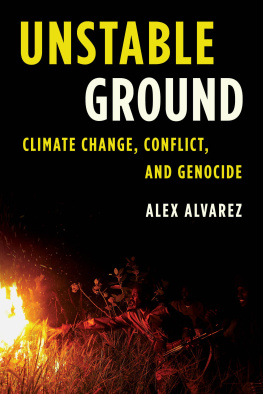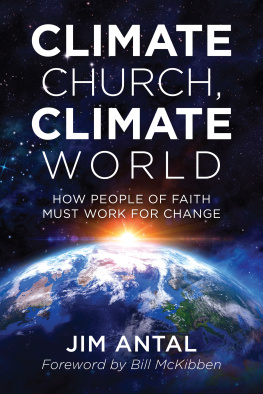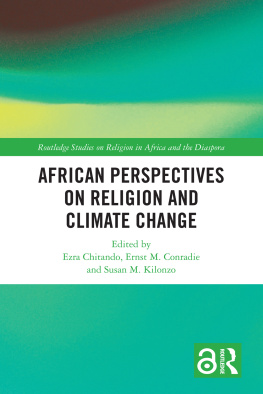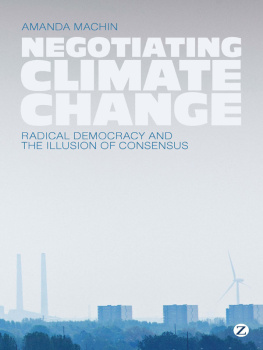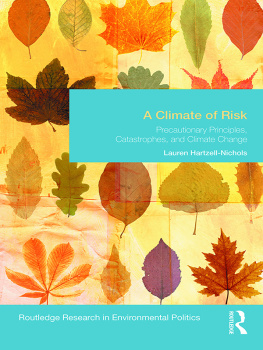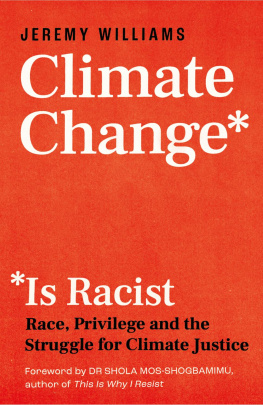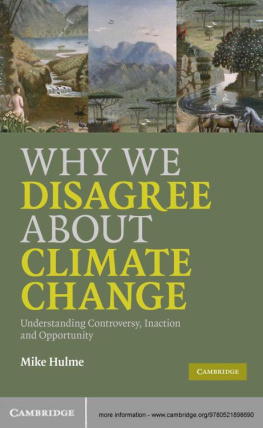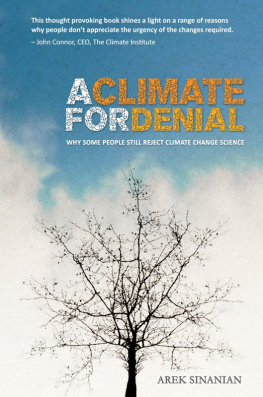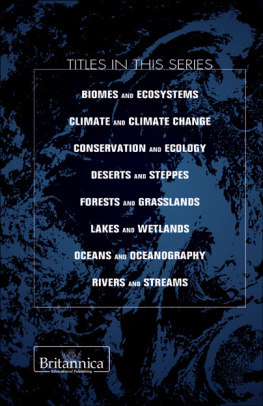2015 University of Alaska Press
All rights reserved
University of Alaska Press
P.O. Box 756240
Fairbanks, AK 99775-6240
ISBN: 978-1-60223-266-2 (paperback); ISBN: 978-1-60223-267-9 (electronic)
Library of Congress Cataloging-in-Publication Data
Marino, Elizabeth K., 1978
Fierce climate, sacred ground : an ethnography of climate change in Shishmaref, Alaska / by Elizabeth Marino.
pages cm
Includes bibliographical references and index.
ISBN 978-1-60223-266-2 (pbk.: acid-free paper)ISBN 978-1-60223-267-9 (electronic)
1. Human beingsEffect of climate onAlaskaShishmaref. 2. EthnologyAlaskaShishmaref. 3. Climatic changesAlaskaShishmaref. 4. Indiginous peoplesAlaskaShishmarefEcology. 5. Shishmaref (Alaska)Remote-sensing maps. I. Title.
GF71.M37 2015
304.2'5097986dc23
2015002919
Cover design by Krista West
Interior design by Amnet
Cover images by Elizabeth Marino
This publication was printed on acid-free paper that meets the minimum requirements for ANSI / NISO Z39.481992 (R2002) (Permanence of Paper for Printed Library Materials).
This book is dedicated, in gratitude, to Daniel Iyatunguk, Shirley Weyiouanna and all ancestors from the Shishmaref coast; to Rachel and Rich Stasenko, Esther Iyatunguk, Kate and John Kokeok, Tony and Fannie Weyiouanna, Clifford Weyiouanna, Nancy Kokeok, Annie Weyiouanna, Fred Eningowuk, and all of the adults who make Shishmaref the exquisite homeland it is today; and to Edward, Carter, baby Beth and all the kids from Shishmaref who will inherit the strength and intelligence of their extended families who reach back to time immemorial.
This book is also dedicated to Chris.
All and any of the mistakes in this book are my own.
Acknowledgments
Ive been lucky in my life to have had tremendous teachers, some of whom I would like to thank here.
I am deeply indebted to Peter Schweitzer, who was a trusted advisor, teacher, and friend throughout my graduate work at the University of AlaskaFairbanks and the writing of my dissertationwhich eventually became this book. Working with Peter allowed me to witness interdisciplinary climate change research that remained authentic to the social complexities and issues of voice, power, and representation so critical to anthropology. I am also thankful for Patricia Kwachka, who was a tireless advocate and a biting criticat just the right timesand to David Koester and Patrick Plattet, who gave critical feedback and support.
Stacey Paniptchuk was my initial research partner and friend in Shishmaref, and is probably 95 percent of the reason this project came to be. In an extraordinary stroke of luck, she also always makes me laugh. This research also received support from the Shishmaref City Council and the Shishmaref Erosion and Relocation Coalition. I will never be able to thank the community of Shishmaref and these institutions enough. It was my great honor to work with you. Thank you to everyone who consented to be interviewed and the many hours of work and dedication that residents gave to this project.
I am grateful for Christopher Pangle, who edited a late version of this manuscript and is a constant inspiration and demonstration of the writing life.
I remain forever thankful to Roy Agloinga, Rita Buck, Pretty Buck, Ida Lincoln, Joey Simon, Lolene Buck, Peter Buck, and all my friends from White Mountainwho first taught me about the immeasurable beauty of rural Alaskaand I am extremely lucky to have Chanda Meek, Elizabeth Daniels, (the late) Deanna Kingston, (the late) Octavio Sanchez, Steven Affeldt, Mo Hamza, Tony Oliver-Smith, Gregory Button, Heather Lazrus, Julie Maldonado, Amy Harper, Natalie Dollar, Susan Crate, Sveta Yamin-Pasternak, Amber Lincoln, Tom and Lesley Downing, Nicole Peterson, Laura Henry-Stone, Patti Oksotarok Lillie, and Robin Bronen as colleagues, coauthors, writer-friends, and teachers over the years. I am inspired by your work.
This project could not have been completed without support from the National Science Foundation Arctic Social Science Program under the direction of Anna Kerttula de Echave (Grant No. 0713896). I am thankful for all of my colleagues with Moved by the State, including Florian Stammler, Tim Heleniak, Tobias Hozlehner, Beth Mikow, Gertrude Elimsteiner-Saxinger, Alla Bolotova, Elena Khlinovskaya Rockhill, and Peter Evans. This group of thinkers and academics are the best of the Arctic anthropological tradition, and I am humbled by their rigor and dedication.
I thank my students at Oregon State UniversityCascades for all the times theyve written more than they thought they could and for their bravery in engaging the challenging and frightening material that has the potential to broaden their visions of the world.
I offer sincere gratitude to Laura Wolfe Lornitzo, Nasuruk Rainy Higbee, Tina Walker Davis, Neva Hickman, Ryan Hughes, Steve Pool, Beth Simak, Jeni Rinner, Jenni Peskin, Emily Gregg, Jason Turner, Tamera and Mike Ruesse, Ryan McGladrey, Madolyn Orr, Richard Shackell, Shawn Duffy, Amy Mouton, Rhiannon Roberts, and Jessica Hammerman for keeping me interested and engaged with the world.
I am thankful to my mother and stepfather, Judy and Daniel Soulier, and my incomparable brother, Brett Marino, who teach me about family, service, hard work, and vocation; and to my son, Emile Marino, who is the calm center of the universe.
Mostly I thank my daughter, Louise, who doesnt like it when her mama goes to work, but pretends to write books and conduct research when she plays make believe. I love you, kiddo.
This book is dedicated to my best friend and partner, Christopher Wolsko, and my friends and family in Shishmaref, Alaska.
Chapter One
Its the End of the World, and Shishmaref Is Everywhere
The raging sea is tremendously powerful and needs to be respected. Shishmaref will need to be protected from the sea and moved to a different location, in due time. The move needs to be closely tied to our hunting traditional cultural practices. We are sea mammal hunters.
Herbert Nayokpuk 2005
SHISHMAREF IS EVERYWHERE
The first time I flew into Shishmaref it was 2002. I was a twenty-two-year-old newspaper reporter in a brand-new goose-down jacket holding tight to the seat cushion on a single-engine Alaska bush plane as it bumped through the low layer of clouds. Cold and curious, I stared out the window at a slip of an island that seemed dangerous, vulnerable, and impossibly elegant. The coastal Arctic, especially to an outsider raised on romantic notions of the last frontier, is full of both beauty and ferocity. The Shishmaref island chain is especially stunning. It sits as a curve of sand and permafrost in summer, snow and ice in winter, cutting an arc of differentiation between the Chukchi Sea and the shallow Shishmaref Inlet. Even from that first flight, the wild Arctic coast was magnificent and awe-inspiring, and it seemed to be, from my nave perspective, part of a Jeffersonian dream of wilderness and frontier freedom.
From the air I could see a string of houses, an airstrip, a haphazard scattering of boats, seal-drying racks, and abandoned machinery. In the relative absence of other signs of human life, these human artifacts took on animated qualities. The houses dug into the tundra and clung to the shore. The boats crept toward the waters edge. The seal racks grew up and out of the ground. Flying into a rural Arctic village felt like flying into a more focused, less abstract world, something I still feel today. Everything in the landscapehuman, animal, plant, and plastichas sharp lines and exists in its own right, with some history.


